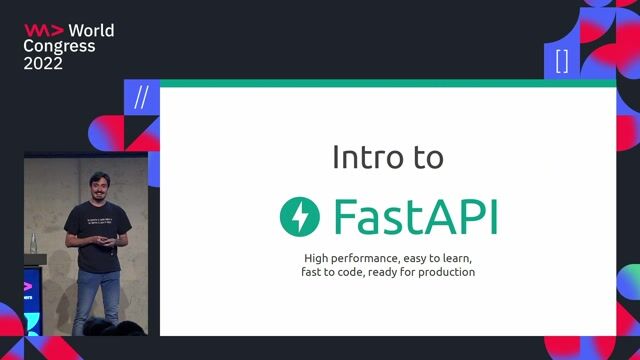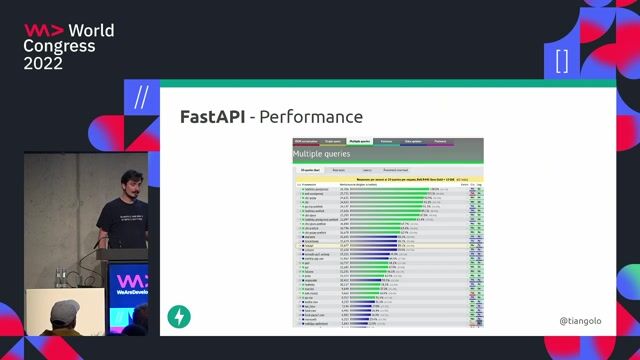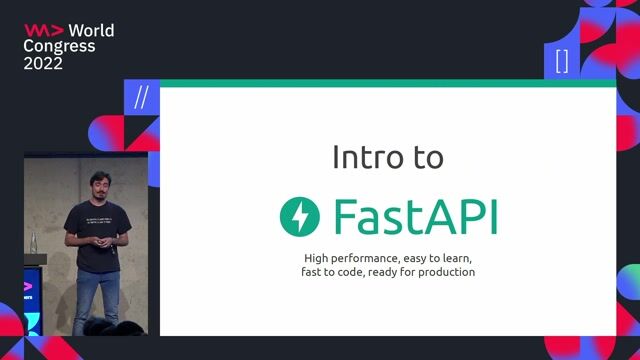Shweta Palande
Devouring APIs with Python
#1about 2 minutes
Understanding the role of an application programming interface (API)
An API acts as a communication layer that allows different software applications, like a taxi app and Google Maps, to exchange data and functionality.
#2about 4 minutes
Deconstructing the components of a REST API URL
A REST API URL is broken down into the protocol, server host, resource path, and optional parameters for filtering data.
#3about 1 minute
Distinguishing between client libraries and API frameworks
Client libraries like `requests` are used to send HTTP requests to endpoints, while API frameworks like `Flask` provide tools to build your own API endpoints.
#4about 5 minutes
Making synchronous requests with the Python requests library
The `requests` library simplifies making HTTP GET and POST requests in Python with a clean, one-line syntax.
#5about 6 minutes
Using the pycurl library as a libcurl wrapper
The `pycurl` library provides a Python interface to `libcurl` for making API calls, offering more control but with a more complex syntax than `requests`.
#6about 5 minutes
Building a simple API with the Flask microframework
Flask allows developers to quickly define API routes and handle different HTTP methods using decorators on Python functions.
#7about 3 minutes
Structuring APIs with the Flask-RESTful extension
The Flask-RESTful extension adds a layer of abstraction for building REST APIs by organizing endpoints into resources, leading to cleaner code.
#8about 8 minutes
Demonstrating synchronous API calls with a live coding example
A synchronous script using the `requests` library fetches 100 URLs sequentially, highlighting the performance bottleneck of waiting for each request to complete.
#9about 3 minutes
Explaining multiprocessing and multithreading with analogies
Multiprocessing achieves true parallelism with multiple CPUs, while multithreading creates the illusion of parallelism on a single CPU, constrained by Python's GIL.
#10about 13 minutes
Achieving high performance with asyncio and aiohttp
Using `asyncio` with the `aiohttp` library enables non-blocking API calls, drastically reducing execution time by performing other tasks while waiting for I/O.
#11about 1 minute
Exploring resources for further API development learning
Cisco DevNet offers learning labs, code samples, and automation exchanges to help developers expand their Python and REST API skills.
#12about 7 minutes
Q&A on concurrency models and developer tools
The discussion covers when to choose different concurrency models, favorite VS Code plugins like Tabnine and Acrolinx, and best practices for error handling.
Related jobs
Jobs that call for the skills explored in this talk.
Matching moments

00:26 MIN
Prerequisites and agenda for the FastAPI talk
Build your backend using FastAPI

11:20 MIN
Exploring the key features and benefits of FastAPI
Build your backend using FastAPI

00:17 MIN
What is FastAPI and why is it so popular
Intro to FastAPI

03:41 MIN
Why learning about new APIs benefits developers
Explore new web features before everyone else

17:41 MIN
Presenting live web scraping demos at a developer conference
Tech with Tim at WeAreDevelopers World Congress 2024

20:43 MIN
Recap and audience questions on FastAPI
Build your backend using FastAPI

21:20 MIN
Achieving high performance with async support
Intro to FastAPI

36:33 MIN
Key benefits of using Python-native streaming frameworks
Python-Based Data Streaming Pipelines Within Minutes
Featured Partners
Related Videos
 47:11
47:11No more Node: Build APIs with Flask and test it with Postman
Teri Eyenike
 56:06
56:06How to make REST APIs in Django?
Kuldeep Pisda
 33:44
33:44Concurrency in Python
Fabian Schindler
 42:19
42:19Intro to FastAPI
Sebastián Ramírez
 39:04
39:04Python-Based Data Streaming Pipelines Within Minutes
Bobur Umurzokov
 23:10
23:10Build your backend using FastAPI
Ashmi Banerjee
 59:43
59:43Accelerating Python on GPUs
Paul Graham
 21:02
21:02CUDA in Python
Andy Terrel
From learning to earning
Jobs that call for the skills explored in this talk.
Web Developer * - Python und FastAPI
UNITY AG
Lippstadt, Germany
Azure
Julia
Python
FastAPI
Amazon Web Services (AWS)
Senior Golang + Python Developer - BCN
Shakers
Municipality of Bilbao, Spain
Go
Python
Docker
Kubernetes
Google Cloud Platform
Senior Golang + Python Developer - BCN
Shakers
Municipality of Valladolid, Spain
Go
Python
Docker
Kubernetes
Google Cloud Platform
Senior Golang + Python Developer - BCN
Shakers
Municipality of Murcia, Spain
Go
Python
Docker
Kubernetes
Google Cloud Platform
Senior Golang + Python Developer - BCN
Shakers
Municipality of Palma, Spain
Go
Python
Docker
Kubernetes
Google Cloud Platform


